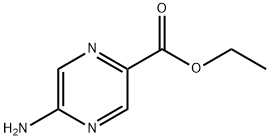In a chemistry lab, scientists are discussing the properties of hexane, a common solvent, and its suitability for various chemical reactions.
Derived Questions:
1.What makes a compound polar or nonpolar?
2.How does the polarity of hexane affect its solubility in water?
Is hexane polar?
Related Products More >
-
- 108-80-5
- USD 50.0000
- 50kg
-
- 108-78-1
- USD 4.5000
- 25kg
-
- 4559-86-8
- USD 750.0000
- 170kg
-
- 77182-82-2
- equest For Quotation
-
- 70131-50-9
- equest For Quotation



 沪ICP备2021018848号-5
沪ICP备2021018848号-5

Reason: Polarity in compounds arises from the unequal distribution of electrons between atoms, resulting in a net dipole moment. In hexane (C6H14), the carbon and hydrogen atoms share electrons equally in their covalent bonds, and the molecular structure is symmetrical. Therefore, there is no net dipole moment, and hexane is classified as nonpolar.
Derived Question 1: What makes a compound polar or nonpolar?
Answer: A compound is considered polar if its molecular structure results in an unequal distribution of electrons, creating a net dipole moment. This can occur due to differences in electronegativity between atoms, leading to unequal sharing of electrons in covalent bonds. Conversely, a compound is nonpolar if its molecular structure is symmetrical and there is no net dipole moment.
Reason: The polarity of a compound determines its interaction with other compounds, particularly in solutions. Polar compounds tend to dissolve in polar solvents, while nonpolar compounds dissolve in nonpolar solvents. Understanding the polarity of compounds is essential in designing chemical reactions and selecting appropriate solvents.
Derived Question 2: How does the polarity of hexane affect its solubility in water?
Answer: The nonpolarity of hexane affects its solubility in water, which is a polar solvent. Hexane is insoluble in water, meaning it does not form a homogeneous mixture when combined. Instead, it forms a separate layer due to the difference in polarity between hexane and water molecules.
Reason: The solubility of a compound in a solvent is determined by the interactions between the compound's molecules and the solvent's molecules. Polar solvents like water interact strongly with polar compounds through dipole-dipole interactions and hydrogen bonding. Nonpolar compounds like hexane do not have these interactions and are therefore insoluble in water.
Notes on Usage and Applications:
In practical applications, the polarity of hexane is important to consider when designing chemical reactions and choosing solvents. For example, hexane is commonly used as a solvent in extraction processes, such as extracting fats and oils from plant materials. Its nonpolarity makes it an effective solvent for nonpolar compounds, allowing for efficient separation and purification. However, care must be taken to avoid mixing hexane with polar solvents like water, as this can lead to phase separation and reduced efficiency in the extraction process. Additionally, hexane is a volatile and flammable compound, so proper handling and disposal practices are essential to ensure safety.
Hexane is an organic compound with the chemical formula C6H14. It consists of a chain of six carbon atoms with hydrogen atoms attached. The carbon-hydrogen bonds in hexane are relatively nonpolar because the electronegativity difference between carbon and hydrogen is small. Moreover, the molecule has a symmetrical structure. The electron distribution in the molecule is relatively uniform, and there are no significant regions of partial positive or negative charge. As a result, hexane has no net dipole moment. In contrast, polar molecules have an uneven distribution of electron density, leading to the presence of a dipole moment. Due to its nonpolar nature, hexane is immiscible with polar solvents like water and has a low solubility in them. It is commonly used as a nonpolar solvent to dissolve nonpolar substances such as oils, fats, and certain organic compounds.